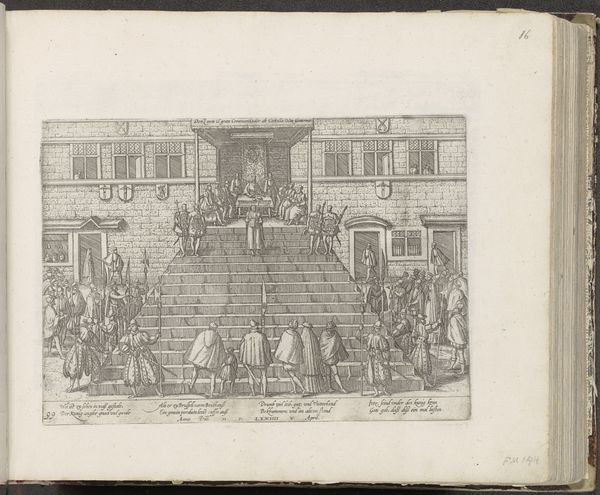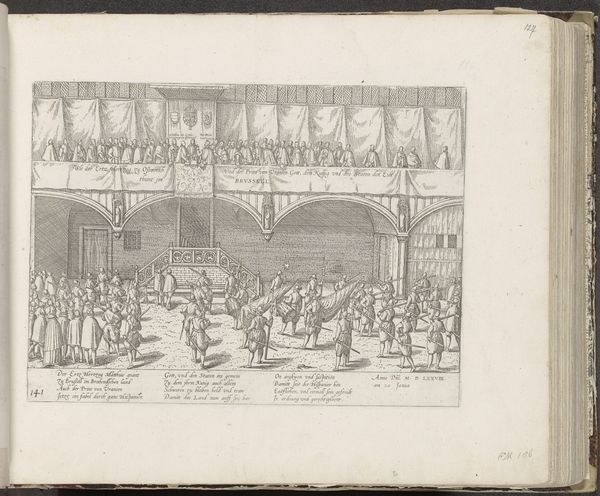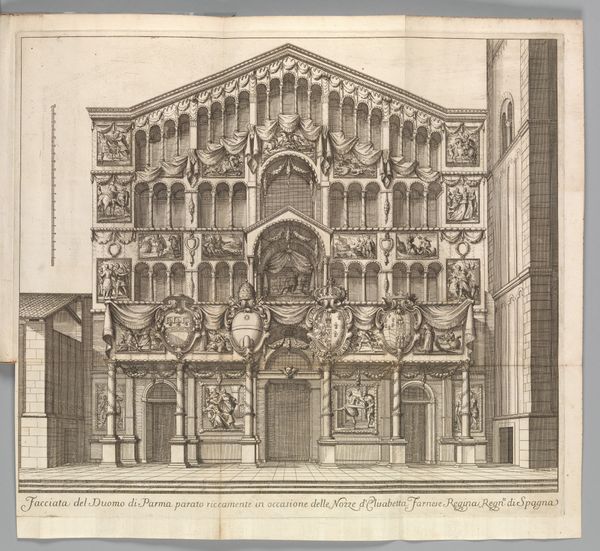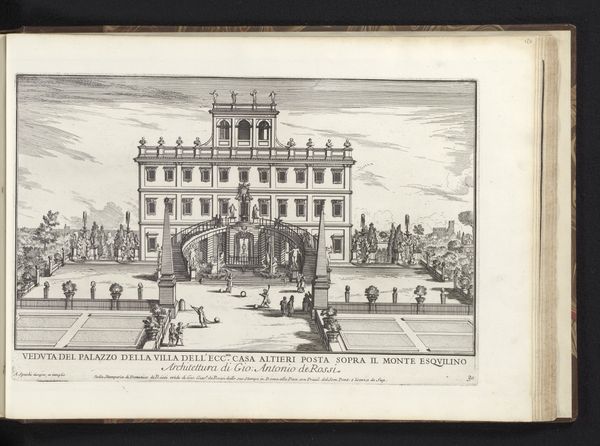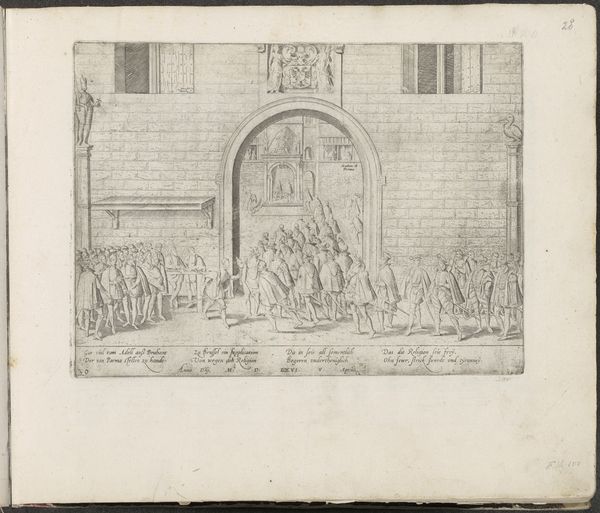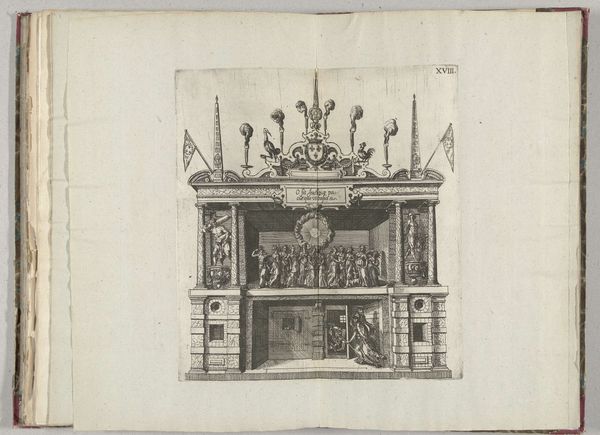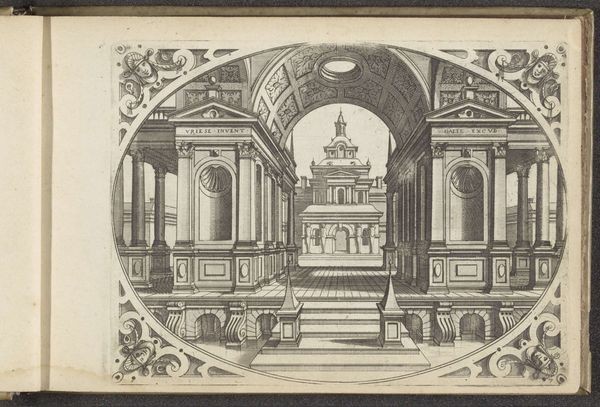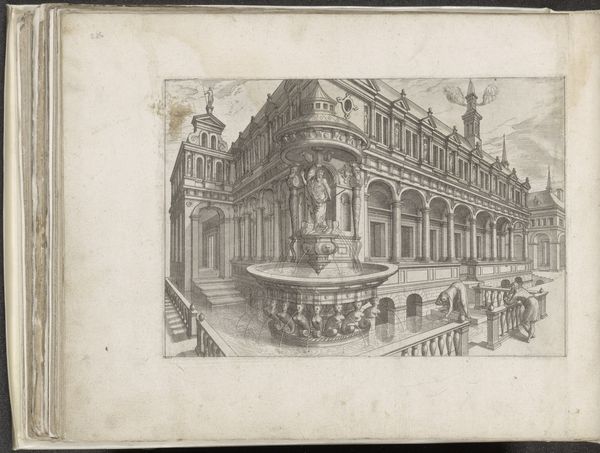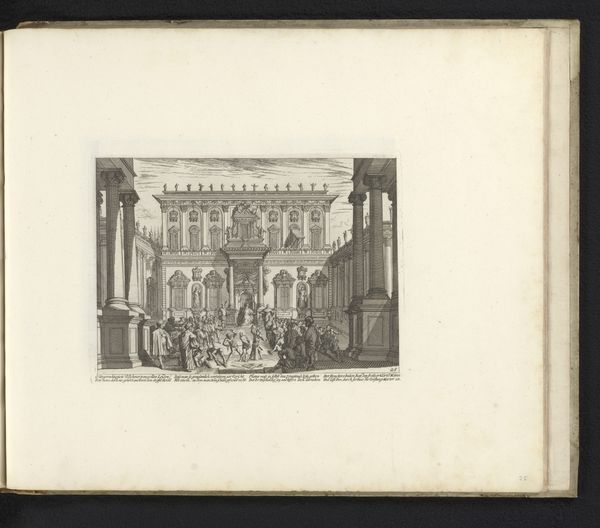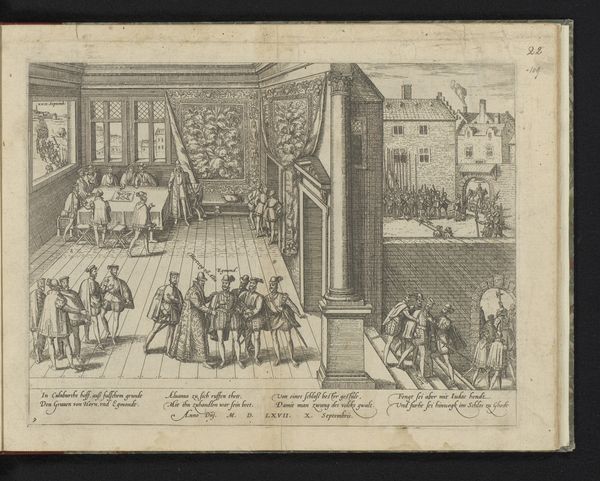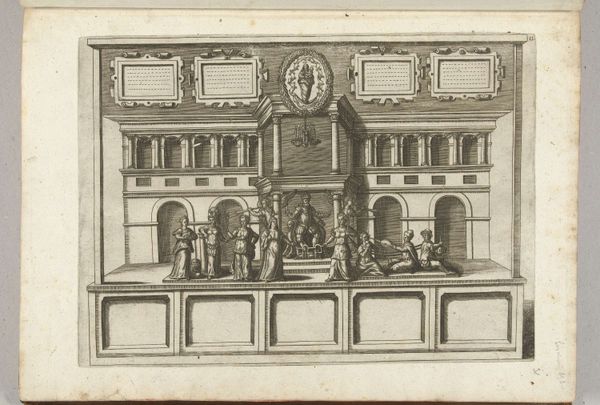
print, etching, engraving, architecture
#
aged paper
#
venetian-painting
#
narrative-art
#
baroque
# print
#
pen sketch
#
etching
#
sketch book
#
personal sketchbook
#
sketchwork
#
pen-ink sketch
#
pen work
#
sketchbook drawing
#
cityscape
#
storyboard and sketchbook work
#
sketchbook art
#
engraving
#
architecture
Dimensions: height 190 mm, width 265 mm
Copyright: Rijks Museum: Open Domain
Editor: Here we have an engraving from 1610 titled "Loggetta del Sansovino on the San Marco Square in Venice," currently residing in the Rijksmuseum. It depicts a lively cityscape, rendered with impressive detail despite the print medium. I’m struck by how the architectural structure dominates the scene, almost overshadowing the figures. What can you tell us about its historical context? Curator: The Loggetta was a very public statement, designed by Jacopo Sansovino. The imagery served to visually reinforce the power and legitimacy of the Venetian Republic, strategically positioned next to the Doge's Palace. The arrangement with elites portrayed indicates who has access and what position each person in this image holds in Venetian society. Does the image suggest a particular event or function? Editor: Possibly a ceremony or public gathering, given the crowd. The individuals seem to be arranged in tiers, based on position and status, with the most important officials near the structure. It feels very staged, or purposefully displayed. Curator: Exactly. Etchings and engravings like this disseminated imagery broadly, allowing the elite to circulate visual symbols of their authority and control. The architecture isn't merely a backdrop, but actively communicates political messaging. Think about how the act of creating and distributing prints could affect public perception, or shape societal values at the time. Editor: It's like early propaganda. So, while seemingly just a cityscape, it's actually reinforcing power structures of Venice. Curator: Precisely. Consider, too, who had access to these prints, and how that limited access might have influenced the reception of its political messaging. Whose voices are amplified and suppressed, even within the image itself? Editor: This helps me understand that this engraving did more than simply capture an image of Venice; it shaped the narrative and distribution of Venice’s status through culture and medium of print. Thanks! Curator: The politics of imagery can often be subtle. It pays to consider the cultural implications inherent within the image.
Comments
No comments
Be the first to comment and join the conversation on the ultimate creative platform.
